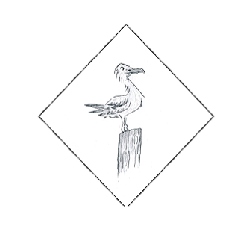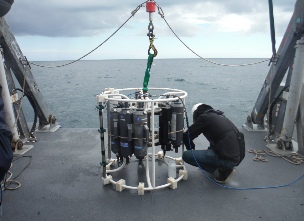DISCLAIMER: These opinions and views are those of the individuals concerned and not those of the University of Southampton.


Abstract:
Offshore surveying was conducted to study the effects of physical water
column properties on the chemical and biological distribution of shelf seas over
temporal and spatial scales. Strong stratification was present offshore with some
increases in mixing towards land. Observed changes in physical properties across
spatial and temporal scales correlated with changes in nutrient and biological distribution.
Introduction:
To determine the physical parameters offshore and how they impact the chemistry and biology, while comparing this with the overall structure in the Fal estuary. Five stations were sampled using CTD casts and ADCP transects, along with zooplankton trawls and water samples, starting with the furthest station from the coast and sampling on the way back. The data from this survey should allow the group to compare and contrast the marine and estuarine environment. Coastal shelf waters, such as the offshore waters off Falmouth, display seasonal increases in stratification due to increased water surface heating during summer months. As stratification increases towards the coast, there is increased interaction with tidal movements.
Methodology:
CTD Deployment Methodology:
The Niskin bottles placed on the CTD rosette were firstly checked to be ready to
fire and the switch CTD was switched to on. To begin to deploy the CTD the dry-
Niskin Bottle Rossette:
Water samples were collected using Niskin bottles mounted on the CTD rosette and deployed off the Callista. Each Niskin bottle was fired at a specific depth that was chosen after CTD was run on a downward profile. These samples were processed in different ways in the wet lab depending on the parameter of interest. The station number and Niskin bottle number was recorded and the different processed samples were also numbered and recorded.
MiniBAT Deployment:
The MiniBAT has a total of 120m of cable that is attached to the capstan before deployment
and detached after retrieval. The MiniBAT is left to run for a period of time over
a predetermined distance and has the orientation within the water column controlled
in the dry lab. Whilst being towed the MiniBAT oscillated up and down through the
water column at a pre-
OFFSHORE SURVEY:
Hover over image for description:
| Results and Discussion |
| Results |
| Discussion and Conclusion |
| Results |
| Discussion and Conclusion |
| Results |
| Discussion and Conclusion |
| Methodology Continued .. |
